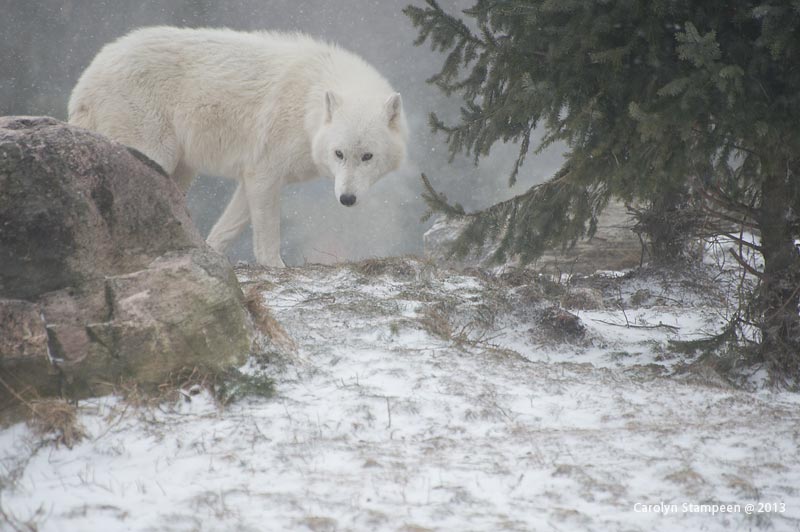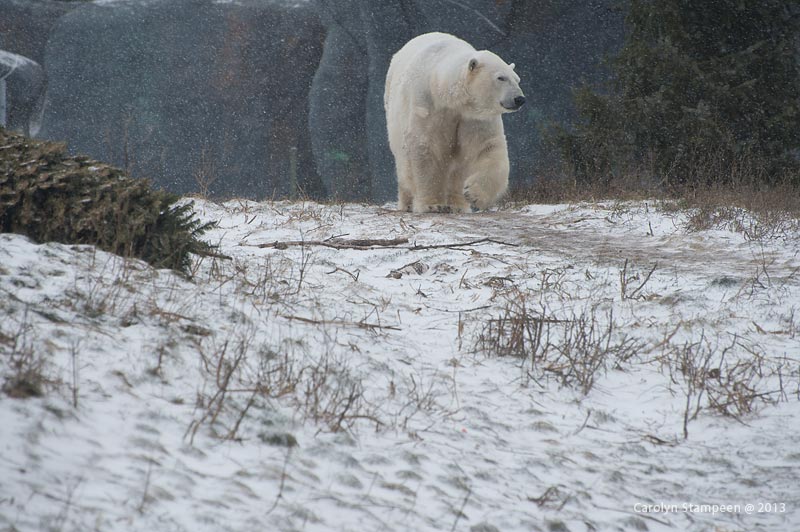It snowed and it was beautiful. Then the rain began again, with record high temperatures, the snow disappeared and blah returned. So it was with excitement that I happened to look out the window and see snow falling! I grabbed my camera and headed to the zoo for a few hours of being away from the computer and enjoyed light snow, snow squalls, sunny breaks, followed by a gorgeous heavy, quiet snowfall that began just as I had to head back home. Body got exercise, face absorbed some light to help with body clock and vitamin D synthesis (regardless of how feeble the light may have been), I got to practice shooting wildlife, my brain relaxed into being in the moment, and my soul got a bit of a refill. We aren’t built to be sedentary, though life often forces this upon us and we begin to forget that.
When shooting through snow, it’s important to remember to adjust our camera’s exposure accordingly. I often have my EV set to +0.3 to “shoot to the right.” This day, it was usually good form to shoot at +0.7. It’s particularly important to pay attention to overriding a camera’s metering system when seeing a lot of black, white, have reflective surfaces, such as water, or there is a lot a contrast in dynamic range, such as we see when shooting a landscape with a bright sky. The digital world of photography makes it much easier to get a feel for when and how much to over-ride. Make friends with your camera’s histogram: if you are shooting with a DSLR, there will likely be a preview function that will allow you to see how your camera is recording a scene.
Seeing a polar bear in the snow seemed natural.
This beaver floated on the water, collecting snowflakes until some sort of critical mass was achieved, then it would dive, swim around and repeat the process.
Snow gave way to some incredible lighting at times, this happening late afternoon as I wandered near the Wood Bison.
Then, in a blink, the sun disappeared behind a cloud and the snow resumed.







